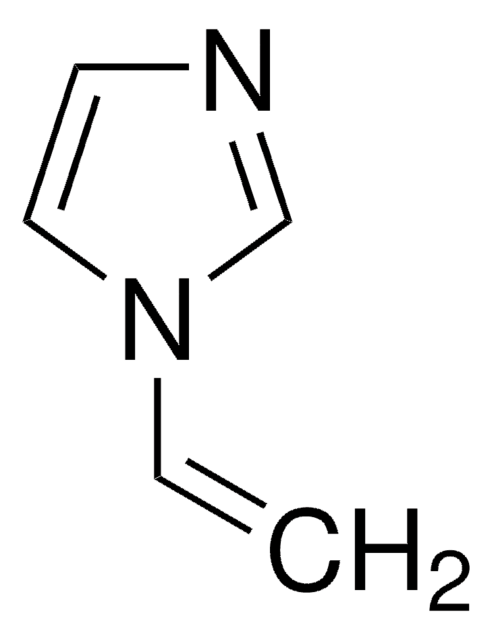Wichtige Dokumente
96566
1-Propanol
analytical standard
Synonym(e):
Propylalkohol
About This Item
Empfohlene Produkte
Qualität
analytical standard
Qualitätsniveau
Dampfdichte
2.1 (vs air)
Dampfdruck
10 mmHg ( 147 °C)
14.9 mmHg ( 20 °C)
Assay
≥99.9% (GC)
Selbstzündungstemp.
700 °F
Haltbarkeit
limited shelf life, expiry date on the label
Expl.-Gr.
13.7 %
Methode(n)
HPLC: suitable
gas chromatography (GC): suitable
Brechungsindex
n20/D 1.384 (lit.)
n20/D 1.385
bp
97 °C (lit.)
mp (Schmelzpunkt)
−127 °C (lit.)
Dichte
0.804 g/mL at 25 °C (lit.)
Anwendung(en)
cleaning products
cosmetics
environmental
flavors and fragrances
food and beverages
personal care
Format
neat
SMILES String
CCCO
InChI
1S/C3H8O/c1-2-3-4/h4H,2-3H2,1H3
InChIKey
BDERNNFJNOPAEC-UHFFFAOYSA-N
Suchen Sie nach ähnlichen Produkten? Aufrufen Leitfaden zum Produktvergleich
Allgemeine Beschreibung
Anwendung
- Bestimmung von Acetaldehyd, Methanol und höheren Alkoholen in verschiedenen Spirituosenproben durch Dampfraum-Gaschromatografie (HS-GC), die an einen Flammenionisationsdetektor (FID) gekoppelt ist
- Identifizierung von wichtigen Duftstoffen in Chixian-Aroma-artigen Spirituosen mittels Gaschromatografie-Olfaktometrie und weitere Bestimmung der alkoholischen Duftstoffe mittels GC-FID
- Analyse von 56 illegalen Alkoholproben zum Nachweis des Vorliegens von Methanol und seinen Derivaten mittels Gaschromatografie-Massenspektrometrie (GC-MS)
- Nachweis und Quantifizierung von flüchtigen organischen Verbindungen (VOC) in 75 Spirituosenproben mittels Gaschromatografie in Kombination mit Massenspektrometrie (GC-MS)
- Qualitative und quantitative Analyse von 10 flüchtigen organischen Verbindungen aus verschiedenen Chemikalienklassen in trinkbaren Spirituosen auf Grundlage von Molke während verschiedener Stufen der Destillation
Sonstige Hinweise
Signalwort
Danger
H-Sätze
Gefahreneinstufungen
Eye Dam. 1 - Flam. Liq. 2 - STOT SE 3
Zielorgane
Central nervous system
Lagerklassenschlüssel
3 - Flammable liquids
WGK
WGK 1
Flammpunkt (°F)
71.6 °F - closed cup
Flammpunkt (°C)
22 °C - closed cup
Persönliche Schutzausrüstung
Eyeshields, Faceshields, Gloves, type ABEK (EN14387) respirator filter
Hier finden Sie alle aktuellen Versionen:
Besitzen Sie dieses Produkt bereits?
In der Dokumentenbibliothek finden Sie die Dokumentation zu den Produkten, die Sie kürzlich erworben haben.
Kunden haben sich ebenfalls angesehen
Artikel
The Utility of Headspace Grade Solvents for the Analysis of Organic Volatile Impurities
Protokolle
-Butanol; 2-Methyl-2-butanol; 2-Methyl-1-butanol; 3-Pentanol; 1-Butanol; 2-Methyl-1-propanol; 2-Pentanol, 98%; 3-Methyl-1-butanol; 1-Propanol
Separation of Acetone; Acetic acid; Propionic acid; Ethyl butyrate; Ethanol; Isoamyl acetate; Isobutyric acid; 3-Methyl-2-butanol; Methyl acetate; 1-Propanol; Acetal, ≥98%, FG; 2-Methyl-1-pentanol; Butyl acetate; Ethyl propionate; 3-Pentanol; 2-Pentanol, 98%; Ethyl isobutyrate; Isobutyl acetate; Acetaldehyde; Furfural; Butyric acid; Methanol; Ethyl acetate
GC Analysis of Class 3 Residual Solvents on SUPELCOWAX® 10
Verwandter Inhalt
Butyl methyl ether; Acetic acid; 2-Butanone; Ethyl acetate; Tetrahydrofuran; 1-Butanol; Isopropyl acetate; Heptane; Propyl acetate; 3-Methylbutanol; 4-Methyl-2-pentanone; Isobutyl acetate; Butyl acetate; Dimethyl sulfoxide; Anisole; Cumene
Unser Team von Wissenschaftlern verfügt über Erfahrung in allen Forschungsbereichen einschließlich Life Science, Materialwissenschaften, chemischer Synthese, Chromatographie, Analytik und vielen mehr..
Setzen Sie sich mit dem technischen Dienst in Verbindung.









